|
|
M*A*S*H*
|
Name:
|
M*A*S*H* |
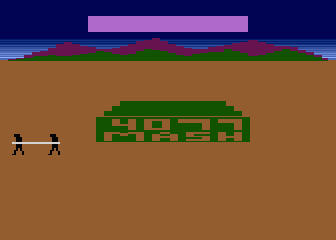 |
| Company: | 20th Century Fox / Fox Video
Games (A. Eddy Goldfarb and Associates) |
|
|
Model #:
|
N/A | |
|
Programmer:
|
Frank Cohen |
|
| Year: | 1982 | |
|
Released?
|
No
|
|
|
Notes:
|
Discovered in 2023 |
MASH (or M*A*S*H* if you want to get technical) stands for
Mobile Army Surgical Hospital, which is a fancy way of saying a
war hospital. Starting out as a movie in 1970 and then
turned into a TV show in 1972, MASH ran for over 11 years and
went on longer than the war it was based on. In fact MASH
was so popular that the final episode still holds the record for
the most watched TV episode of all time. Although MASH was
wrapping up its record run in 82/83, 20th Century Fox (TCF) knew
it was a no brainer to make a video game based off the popular
franchise. While a MASH game was eventually released on
the Atari 2600, TI-99, and Atari 8-bit computers (as a Romox
ECPC cart), there was an entirely different version that was
presented to TCF for consideration. This is the story of
that prototype.
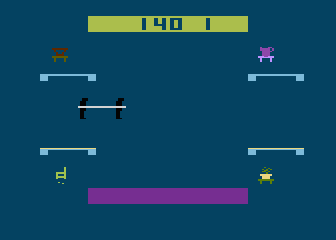
MASH (or 4077 MASH as it's shown on the title screen) is a much different beast than the version that was actually released. Instead of piloting helicopters and performing surgery, in this version you control two people carrying a gurney. Your job is to unload patients from the incoming helicopter or ambulance, move them into the surgery tent, move them into the recovery room, and eventually load them back onto the helicopter or ambulance. Think of it as a giant assembly line full of blood, guts, and people. Actually no, don't think about that. That's just weird.
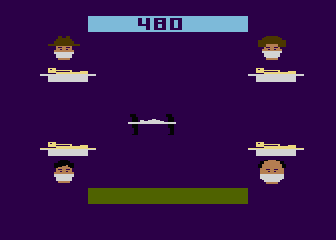
You start the game outside the MASH tent.
After the opening tune plays (which sort of sounds like the end of
the MASH theme), you can begin moving your gurney team.
You'll have to wait a few seconds for the helicopter and ambulance
to arrive, but if your gurney is free you can grab the old man
with the cane that slowly walks across the screen. This guy
acts as a sort of 'bonus' in that you don't have to grab him like
you do the regular patients, but if you have time you can snag him
and take him into the tent for points (he acts as a regular
patient once you do). Make sure you don't touch him while
your gurney is full or you'll get a penalty (represented by the
tick marks next to the score). Get three penalties and the
game will be over. Once the helicopter and ambulance arrive
you can go over to them and press the button to pick up the
patient (the vehicle will change color indicating its
empty). Once your gurney has a patient, enter the right side
of the tent.
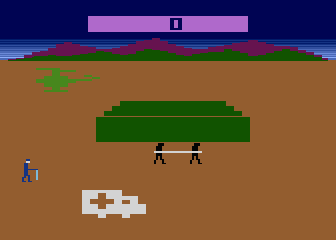
You'll now be in the surgery tent. There are four open tables onto which you can put a patient (press the button when under the table to drop the patient). The 'drop zone' is a little wonky in this prototype so you might have to move around a bit mashing the button until you're able to unload the patient. Once your gurney is free you can exit the tent and pick up another patient until all four tables are full. While in the tent be careful to avoid the guy in the wheelchair or the doctor wandering around. Touching either of these two will result in a penalty. After some time you'll hear a high pitched tone and one of the patients will blink. This means that they're ready to be moved to recovery. Pick up the blinking patient with the fire button and go to the left side of the screen (or if you're outside the tent, enter the left side of the tent).
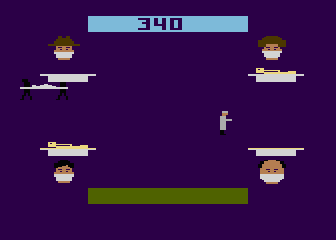
You're now in the recovery room. This room is exactly the same as the surgery room with four beds available. Drop your patient off in an available bed and you're then free to grab the next victim from either the surgery room or the ambulance/helicopter. After a short time you'll hear a lower pitched tone and one of the patients in the recovery room will blink. This means the patient is ready to be loaded onto an empty helicopter or ambulance. If the helicopter or ambulance isn't free then you'll have to unload them first before you can move your recovery room patient onto one of them (they constantly leave and come back with new patients so be quick). You can temporarily move patients back and forth between the surgery and recovery room to free up space even if they're not ready, but you won't receive points unless you do it in the correct order. It's very easy to get backed up, so make unloading the vehicles your first priority or you'll end up with two full rooms and no where to put people. If you don't move a blinking patient after a set period of time (which is actually pretty generous), you'll get a penalty.
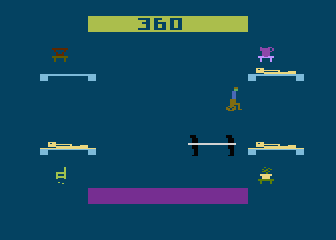
That's about all there is to the game. The main obstacles are making sure there's a free space to move patients and avoiding the old man if your gurney is full. The old man is a pain as he moves VERY slowly across the screen and blocks you from getting to the ambulance. You can get around him by cutting through the tent, but then you risk hitting the wheelchair guy or the doctor. There don't appear to be any game variations or options in this prototype, but as it's not a finished product they may have been added later. Being a prototype, the game also has some bugs in it. As previously mentioned the 'drop zone' for dropping patients off in their beds is hard to figure out and requires a bit of moving around to find the sweet spot. There's also some bugs in the scoring where the player is awarded points even if they do things out of order (taking an still injured patient to the helicopter for example) and the player can constantly load/unload patients from the vehicles and continually score points. Also of note is that once the game is over you'll have to reload the game to start again.
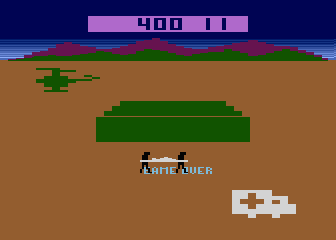
So why was this version of MASH never released? According to programmer Frank Cohen:
"They (A. Eddy Goldfarb and Associates) had me take it to the Consumer Electronics Show in Las Vegas and show it to buyers from Toys "R" Us. Toys "R" Us selected the game that Fox actually released. It was a surprise to me that there was competition. And it really didn't make a difference because the ET cartridge was about to kill the whole industry. I prototyped the game on an Atari 800 and if they had accepted it, I would have written it for the 2600 as a cartridge."
The other version Frank is referring to is the Atari 8-Bit version that was released by Romox on their ECPC re-writable cartridges (TCF never put out any Atari 8-Bit games under their own label) which was done by an unknown programmer. This version is best known for its Atari 2600 port which was done by 'Dallas North' aka Doug Neubauer which saw a wider release.
Special thanks to John Hardie for obtaining and releasing this prototype!
| Version | Cart Text | Description |
| 1/6/82 | M*A*S*H* Prototype
v1.2 Jan-6-1982 001 |
Unreleased version |
